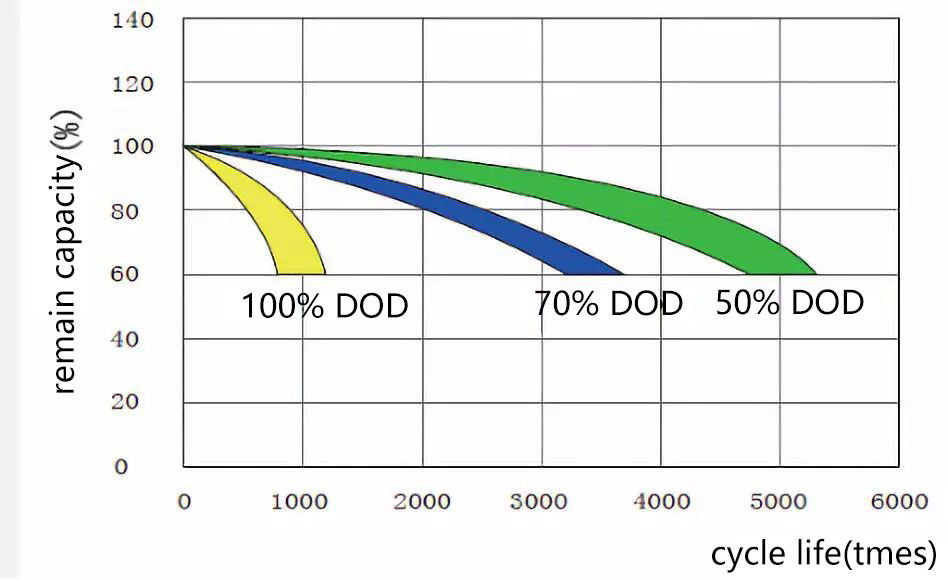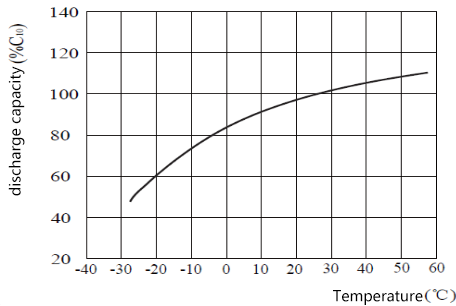
Lead-Acid Battery Technical Guide: 4 Key Parameters for Optimal Performance
2025-06-23 16:00Introduction
Understanding core technical parameters is critical when selecting lead-acid batteries (especially gel or lead-carbon types). This guide breaks down rated voltage, max charge/discharge currents, depth of discharge (DOD), cycle life, and power calculations to help you optimize battery lifespan and system design.
1. Rated Voltage
Battery voltage is higher under no-load conditions and decreases under load.
Sudden large-current discharge causes immediate voltage drop.
Voltage vs. State of Charge (SOC) maintains an approximately linear relationship only under no-load conditions.
The following are the reference values of the battery voltage and remaining capacity of the battery:

2. Maximum Charge/Discharge Currents
? Current Calculations (C-rate):
C = Battery Capacity (Ah).
Example: Capacity C=100Ah, 0.15C = 0.15 × 100 = 15A.
⚡ Specific Battery Limits:
Battery TypeMax Charge CurrentMax Discharge Current
Gel Lead-Acid0.15C~3I₁₀ (e.g., 3 × 25A = 75A for C₁₀=250Ah)
Lead-Carbon0.25C₁₀*30I₁₀*
* Example:
Charging: 0.25C₁₀ = 0.25 × 250Ah = 62.5A
Discharging: 30I₁₀ where I₁₀ = C₁₀/10 = 25A → 30 × 25A = 750A
⚠️ System Design Rules (Original Calculations):
Charging Current (Component-dependent):
*5kW system + 48V battery* → Max charging current ≈ 100A
Ordinary lead-acid (0.1C): Min. capacity = 1000Ah
Lead-carbon (0.25C): Min. capacity = 400Ah
Discharging Current (Load-dependent):
*10kW load + 48V battery* → Max discharge current = 200A
Lead-carbon battery(30I₁₀): Min. capacity = >80Ah
Gel battery (3I₁₀): Min. capacity = 800Ah
3. Depth of Discharge (DOD) & Cycle Life:
Shallow Cycle: 10-30% DOD
Medium Cycle: 40-70% DOD
Deep Cycle: 80-90% DOD
⏳ Cycle Life Data :
Battery TypeCycle Life
Traditional Stationary500-600 cycles
Starter Battery300-500 cycles
VRLA Battery1000-1200 cycles
Lead-Carbon Example :
DODCycle LifeService Life
50%4,880>12 years
70%3,760>10 years
100%998<3 years
? Key Insight: Optimal DOD = 60-70%

4. Battery Power Calculation
Theoretical Power = Voltage × Capacity
Example: 12V 250Ah → 12 × 250 = 3,000Wh (3kWh)
Actual Usable Power = Theoretical Power × DOD
Example: 70% DOD → 3,000Wh × 0.7 = 2,100Wh (2.1kWh)
Summary of Unchanged Data Points:
All C-rate calculations (0.15C, 0.25C₁₀, 30I₁₀)
System design examples (5kW/48V=100A, 10kW/48V=200A)
Capacity requirements (1000Ah, 400Ah, 800Ah)
Cycle life numbers (4,880 / 3,760 / 998)
Power calculations (3kWh theoretical → 2.1kWh usable)
Lead-carbon batteries offer superior performance in high-current scenarios (0.25C charging, 30I₁₀ discharge) and extended cycle life at partial DOD. For systems with space/weight constraints or dynamic loads, they provide a 40-60% capacity reduction advantage over gel batteries. Always match DOD to your cycle life requirements to maximize ROI.

